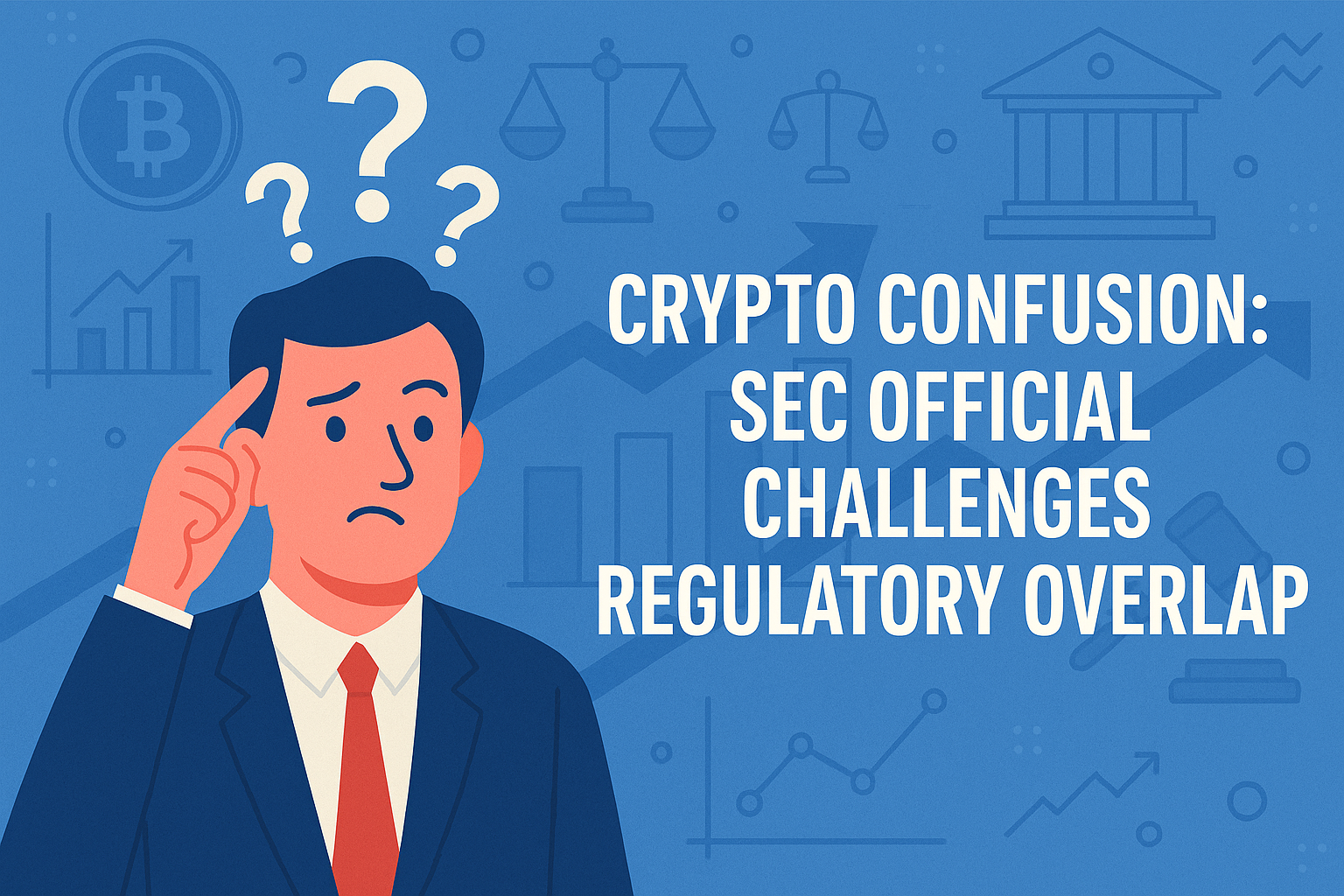
Regulatory Signals Sending Mixed Messages
In a striking development that’s further clouded the future of crypto regulation in the United States, U.S. Securities and Exchange Commission (SEC) Commissioner Caroline A. Crenshaw released a blistering statement questioning the agency’s inconsistent stance on digital assets. The comments, made public on May 31, reflect a growing internal rift within the SEC about how to regulate cryptocurrencies like Ethereum (ETH) and Solana (SOL).
Crenshaw’s concerns center around what she calls the Commission’s “regulatory chaos”—a patchwork of contradictory guidance that has left investors, startups, and institutions alike guessing at what counts as a security in the crypto world. Her critique comes as the SEC’s Crypto Task Force continues its stated mission to bring clarity to the crypto asset landscape in 2025.
Instead of clarity, Crenshaw argues, the SEC has sown deeper confusion, and in doing so, is undermining its own legal framework and credibility.
Crenshaw Critiques SEC’s Inconsistencies
Crenshaw pointed to a number of public statements made by SEC staff between February and April 2025. These communications, issued through the Division of Corporation Finance, claimed that several categories of digital assets—including meme coins, proof-of-work cryptocurrencies, and certain stablecoins—do not fall under the definition of securities.
Crenshaw dissented each time, warning that such declarations risk minimizing investor protections and could leave the door open to systemic risks in the financial markets.
Yet, in what she described as a baffling contradiction, the SEC recently allowed new exchange-traded products (ETPs) and exchange-traded funds (ETFs) tied to ETH and SOL to proceed without objection. The catch? These products were filed under the Investment Company Act of 1940, which applies only if the underlying assets are treated as securities.
Crenshaw questioned the inconsistency head-on:
“In the name of this clarity, we’ve seen staff statement after staff statement, pronouncing that all sorts of crypto assets are not securities. And yet, now we see no objection to the effectiveness of new exchange-traded funds that assert certain crypto assets—ETH and SOL—actually are securities.”
This raises a vital question: How can the SEC simultaneously claim ETH and SOL are not securities for registration purposes but are securities when approving new financial products based on them?
Double Standards in Crypto Oversight
The most controversial part of Crenshaw’s statement is her suggestion that the SEC is selectively applying its securities framework to benefit market participants. By allowing ETFs based on ETH and SOL while issuing other contradictory guidance, Crenshaw argued the agency is engaging in a kind of regulatory doublethink.
She put it bluntly:
“How is it that these crypto assets are supposedly not securities when it comes to registration requirements, but conveniently are securities when a registrant sees an opportunity to sell a new product?”
Crenshaw’s remarks point to a broader issue with the SEC’s current approach: the apparent lack of a unified, coherent standard for determining what constitutes a security in the crypto space. As different departments within the Commission continue to issue conflicting positions, the investing public is left navigating increasingly muddy waters.
This inconsistency also introduces legal risk. Should courts eventually weigh in on whether ETH or SOL are securities, the SEC’s past contradictory actions could weaken its legal footing. Moreover, startups trying to remain compliant are stuck in limbo, unsure whether to register their tokens or not.
Growing Divide Inside the SEC
This isn’t the first time a high-ranking SEC official has spoken out about regulatory direction. Commissioner Hester M. Peirce, often dubbed “Crypto Mom” for her pro-blockchain stance, has long advocated for a more permissive, innovation-friendly approach. In the current debate, she reaffirmed that “most currently existing crypto assets in the market” are not securities.
Crenshaw’s sharply worded dissent suggests that the SEC is now facing not just pressure from the industry, but also from within its own ranks. The divide could become more prominent as Congress continues to stall on comprehensive crypto legislation, effectively giving the SEC greater power—and responsibility—over crypto oversight.
Crenshaw closed her remarks by warning that the Commission’s quest for regulatory clarity has, ironically, only led to more confusion:
“So far, the Commission and the Crypto Task Force’s journey to clarity has only taken us further and further adrift in increasingly muddy waters of our own making.”
This statement may have far-reaching implications. It highlights how the SEC’s lack of a consistent legal framework is harming its own authority and creating regulatory uncertainty in a sector that thrives on innovation and speed.
What’s Next for Crypto Regulation?
Crenshaw’s criticism couldn’t come at a more pivotal moment. With ETH and SOL both trading at multi year highs in 2025 and institutional interest rising, the classification of these assets could reshape the entire crypto landscape.
Her statement is likely to reignite debates about how crypto should be regulated in the U.S.—and whether the SEC is still the right agency to lead that charge. Some industry voices are calling for a new regulatory body focused solely on digital assets, arguing that the SEC’s traditional framework is simply too outdated for today’s decentralized finance world.
Until then, the crypto market remains in a state of flux. Investors, builders, and regulators alike must contend with an environment in which the rules seem to shift with each passing quarter. One thing is certain: Caroline Crenshaw’s words have turned up the heat on an already contentious issue—and the demand for clarity is louder than ever.